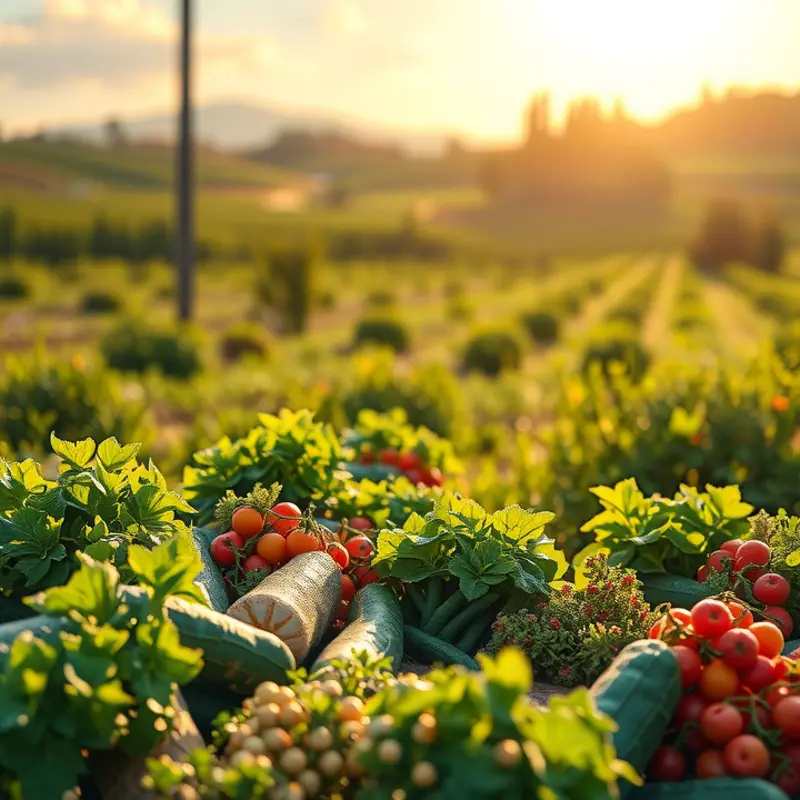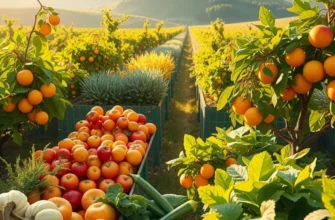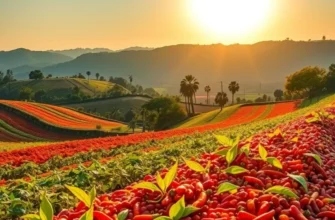From ancient tales to modern delights, food has long been intertwined with folklore that weaves cultural values and history into every bite. As culinary enthusiasts yearn for deeper connections to their meals, exploring the enchanting stories behind various foods unveils unique perspectives on tradition, spirituality, and community. Whether it’s the legend behind a dish served at a wedding feast or a beloved street food with roots in ancient rituals, each element reveals the cultural richness of the communities they originate from. Let’s embark on a journey through two captivating culinary landscapes where folklore breathes life into food.
Legends of the Lunar New Year: Dumplings and Fortune

During the Lunar New Year, families across China gather around tables, indulging in the rich symbolism of dumplings. Each dumpling, whether clasped between chopsticks or cradled by a spoon, is more than a delicious morsel; it is steeped in folkloric tales of wealth and unity. Resembling ancient gold ingots, dumplings symbolize prosperity and good luck for the year ahead. Their preparation and consumption are acts of culinary tradition interwoven with cultural storytelling.
In northern China, dumplings or ‘jiaozi’ are typically filled with cabbage and pork, which carry their own symbolic meanings. Cabbage, known for its longevity and hardiness, is said to bring wealth and prosperity. The pork signifies strength and abundance, completing a package of fortunes wrapped delicately in a doughy skin. Regions like Beijing add a touch of Sichuan pepper, inviting warmth into the cold winter ambiance as families dine together.
The making of dumplings is a familial event, encouraging the participation of each generation. Elders teach the young the art of kneading dough and crafting the perfect dumpling shape. This shared activity fosters a sense of unity, passing down recipes and stories that are as much about life lessons as culinary skills. Here, the food becomes a vessel for intergenerational bonds—ensuring that the legends of the dumpling are as enduring as their taste.
Southern regions, such as Guangdong, showcase a different perspective, where dim sum takes center stage. Dumplings are crafted with an array of fresh seafood fillings, enhancing the theme of abundance. Each variation tells a unique story, reflective of the ingredients available in local markets. The tales of prosperity are sweetened further with the inclusion of sweet glutinous rice dumplings, symbolizing family cohesiveness and the hope for a sticky, intertwined future.
Aside from the captivating lore that surrounds them, these culinary practices align with a broader notion of mindful eating. The consciousness with which people come together to create and consume these foods reflects a deeper mindfulness of cultural preservation and familial bonds. Such practices resonate with concepts found in mindful eating approaches, inviting participants to pause and reflect on the meaningful traditions they are sustaining.
Gathered in kitchens aglow with festive cheer, families find joy and comfort in this time-honored ritual. As they fold their futures within each dumpling, they celebrate a new year imbued with the hope and harmony these beloved creations promise. Thus, the legend of the dumpling is not just about the ingredients; it encompasses a journey of cultural remembrance and prosperity that punctuates each new year’s dawn with hope.
The Heart of Italy: Pasta, Myths, and the Goddess

Steeped in mythology and tradition, Italian pasta has ignited imaginations across centuries. This culinary delight, now synonymous with Italy, carries an intriguing tale of origins. While some argue its birth from ancient Etruscans, using primitive tools to craft flatbreads, others suggest the influence of Arabian traders who brought long noodles during invasions. Yet these theories coexist with charming legends, providing endless fodder for the ever-curious.
One such tale is that of Lady Pasqualina, a less-known but beloved figure among pasta artisans. The goddess of pasta, Pasqualina is said to whisper guidance to chefs, ensuring doughs reach the perfect consistency. Legend has it, her divine touch not only guarantees culinary success but also revives failing harvests, endowing fields with bounty.
Entertainment blends with art in Italy’s regional pasta variations. Take Naples’ Gnocchi, small dumplings lovingly crafted from potatoes. They symbolize comfort and nostalgia, embodying the hearty spirit of southern Italy. Folklore reveals that Gnocchi was traditionally prepared by families to honor saints and wish for prosperity, a ritual brewed in devotion and faith.
In contrast, Tuscany celebrates the art of Pici, a thick hand-rolled pasta with humble beginnings. Born from necessity, Pici emerged as rural communities hoped to create hearty meals with minimal resources. It thrives on simplicity, using basic ingredients yet offering profound satisfaction. Each strand carries centuries of labor and love, believed to convey the soul of Tuscany itself. As you relish these dishes, you’re reminded of the cultural richness behind each flavorful bite.
Pasta tales don’t end here, as Italy boasts a plethora of shapes and stories. From the tubular rigatoni popular in Rome to the ribbon-like tagliatelle cherished in Emilia-Romagna, each form captures regional essence with unique histories and methods. As regions used what they had on hand—locally sourced wheat, vegetables, or even game meats—the recipes evolved into beloved traditions shared at family tables.
Curious minds keen on culinary exploration find parallels between Italy’s pasta legacy and broader global food traditions, such as those discussed in a blog post about culinary influences from trade. These nuances highlight interconnectedness in an interconnected world, bridging history and cultural significance one noodle at a time.
In Italy, pasta is more than sustenance; it’s a celebration of life, family, and history. Through the stories and textures of each dish, generations connect not only by using ancient recipes but by revering the tales accompanying them. When you savor a plate of Italian pasta, you’re not merely tasting a dish; you’re partaking in a ritual rooted in mystery, magic, and the hands of gods and goddesses past.
Final words
Folklore and food are inseparable threads woven into the diverse tapestry of cultures around the globe. Each tale behind a dish not only enhances the flavor but also fosters connection, memory, and meaning. As we continue to explore the intersection of culinary traditions and folklore, we discover not just what people eat, but the rich stories that remind us of our shared humanity. Whether it’s the symbolism of dumplings welcoming a new year or the legendary goddess of pasta guiding faithful chefs, these narratives invite us to celebrate food as an act of love, a cultural prayer, and a time-honored tradition. Embrace the flavors of folklore in your kitchen and carry the stories forward with every meal.








